The Bloodstains in the Library
After yesterday’s fantasy about a murder mystery in a country garden, today we got to visit a library with ominous bloodstains in front of the fireplace.
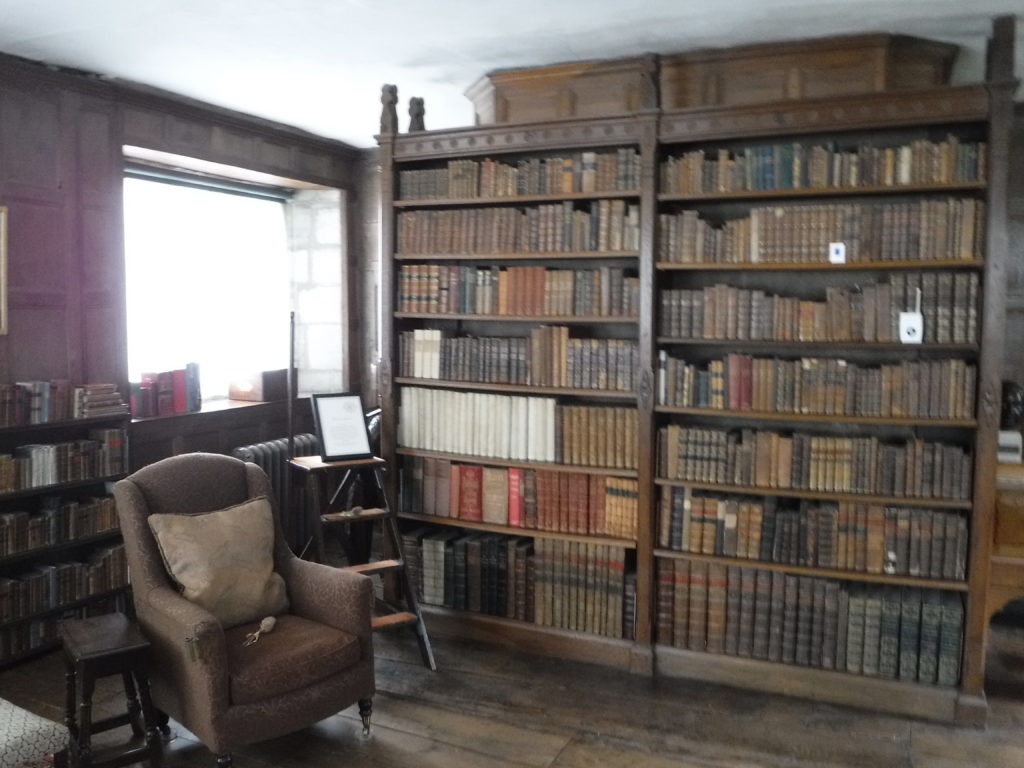
More on that later. Visiting old houses, the library is always my favorite room if they have left the books there. This library was at Baddesley Clinton, a moated manor house.
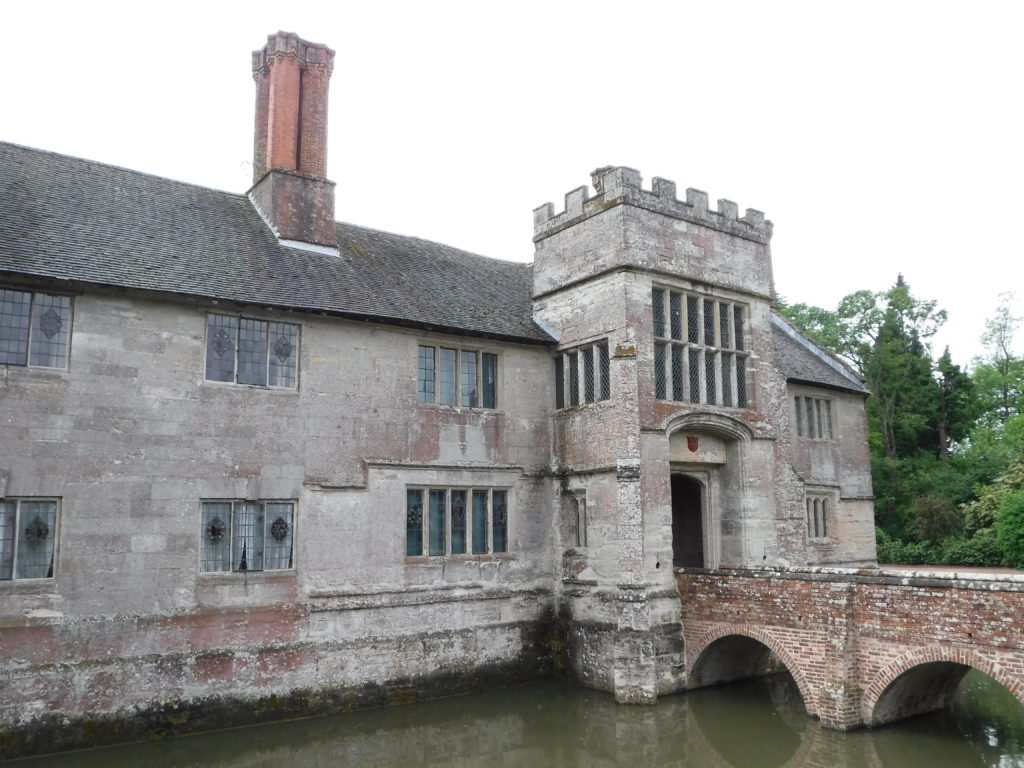
There’s been a fortification there since the 12th Century, but most of the current building was late 16th Century. That was a relatively peaceful time, so the windows are bigger than you would see in a genuine castle. It has an imposing stone front, but the rest is a charming mixture of brick, wood and plaster.
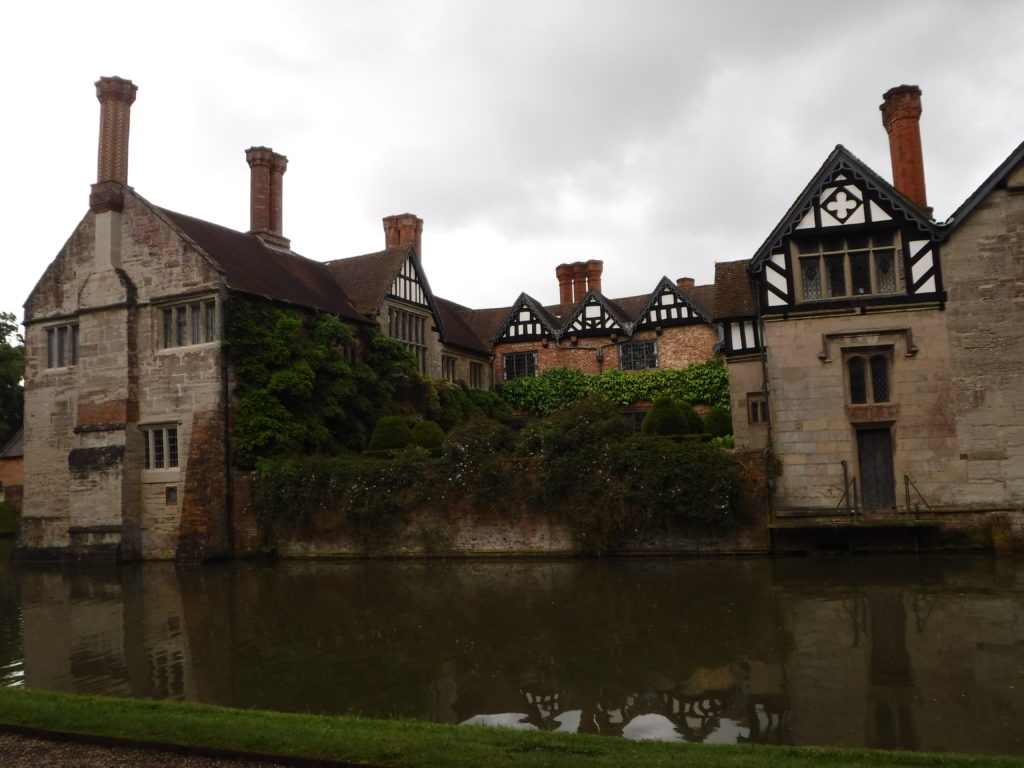
The interior courtyard is particularly lovely.
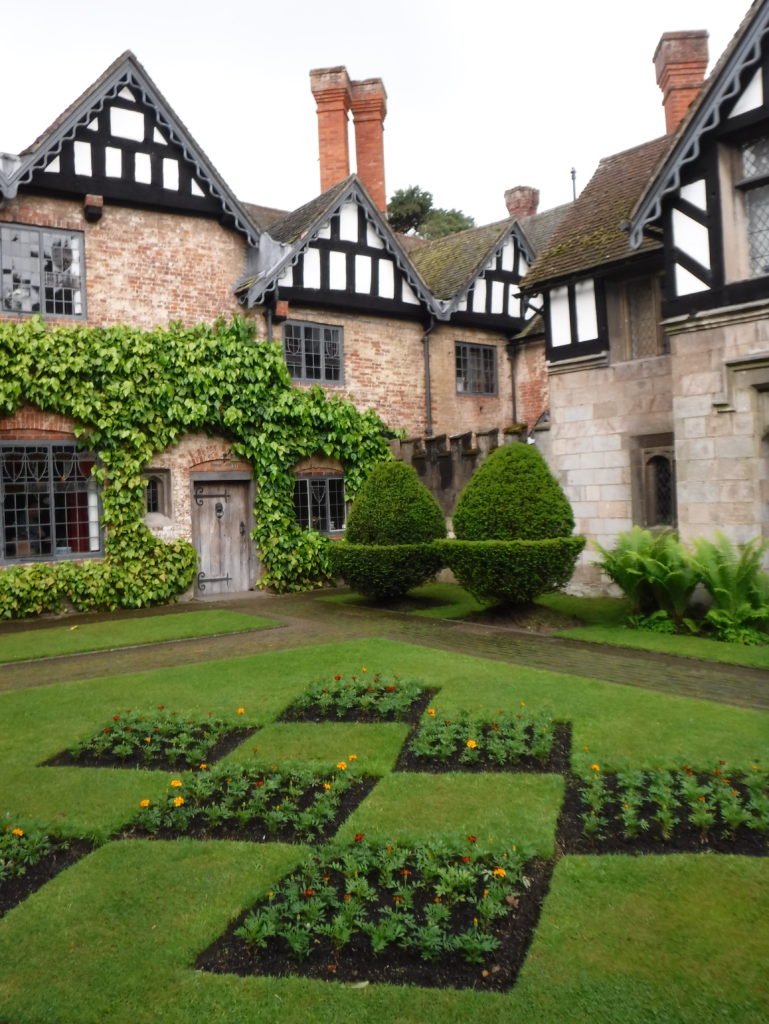
The house was the home of the Ferrers family for five hundred years. The were Catholics through the difficult times of the reformation, so the house had it’s own chapel…

and several priest holes where Catholic priests could hide while government troops were searching for them. The most notable of these was approached through the garderobe via a rope, since replaced by a handy steel staircase, just in case Catholicism gets outlawed again.
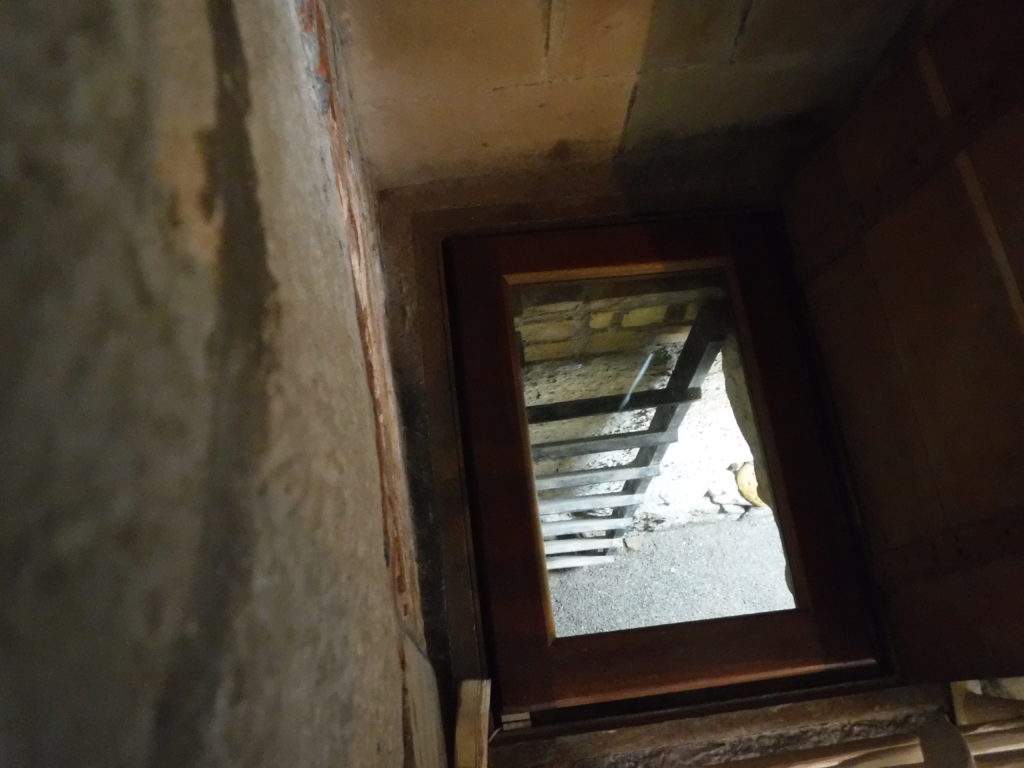
For those of you who aren’t familiar with mediaeval castle plumbing, a garderobe was a wardrobe with a hole overhanging an external wall. You used the hole as a toilet, and hung your clothes in the wardrobe. The cold air and stench from the moat was supposed to keep the moths from eating your clothes, hence gardez robe. In this case the moat was used for fish farming, so the garderobe was a shaft leading to a sewer. This was where a party of Catholics were forced to hide for four hours in the late 16th Century when there was an unexpected knock on the door. They considered themselves lucky to be huddling terrified in shit for a few hours when they could have been burned at the stake.
There were geese in the moat.

This gaggle of goslings were mostly engaged in rooting vermin out of their down, hence the grotesque contortions of their necks and heads. Either that or their grown-up feathers were coming in, and they didn’t half itch. Compared with the berserker mentality of battle swans or the sly maliciousness of your typical duck, geese would seem to be a relatively minor threat to civilization, but ask yourself, when was the last time you saw goose on the menu? It was probably in a book by Dickens. They just haven’t been pulling their weight for the last hundred years.
The gardens here were not as impressive as Packwood, but they were still very lovely.

It was rainy this morning, but in the afternoon we were able to dodge the rain for long enough to cycle over to see Baddesley Clinton, about two and a half miles from the boat. So, like the song says, raindrops on roses.
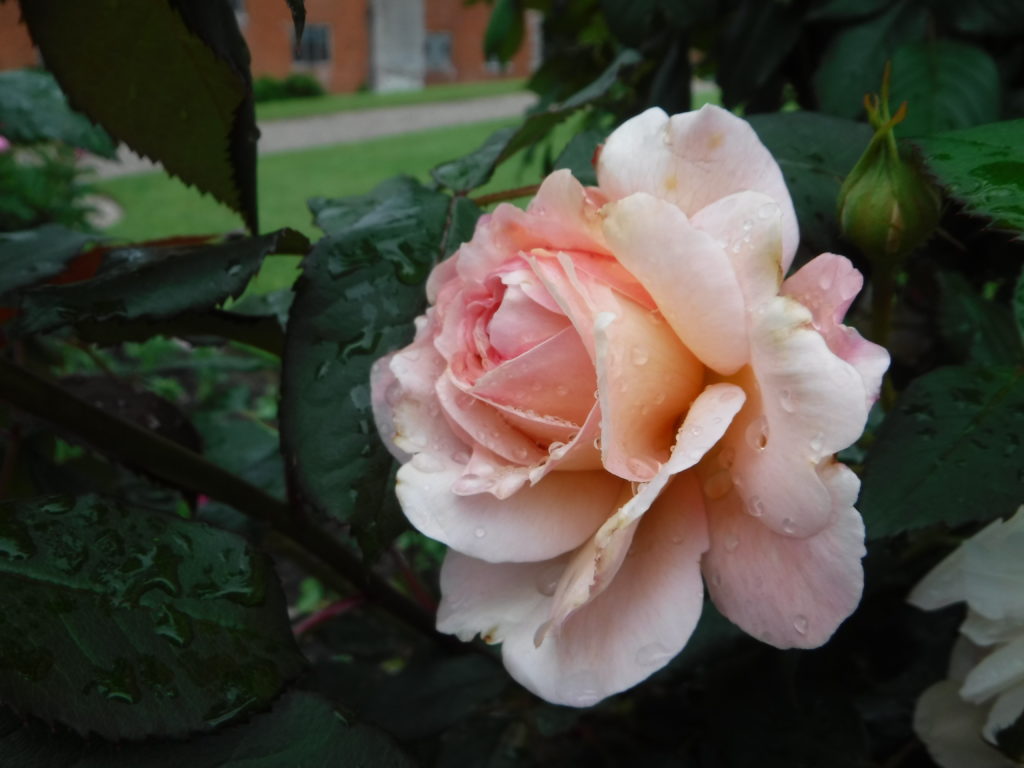
Talking of roses, this bloody great tree is the biggest rose bush I have ever seen.
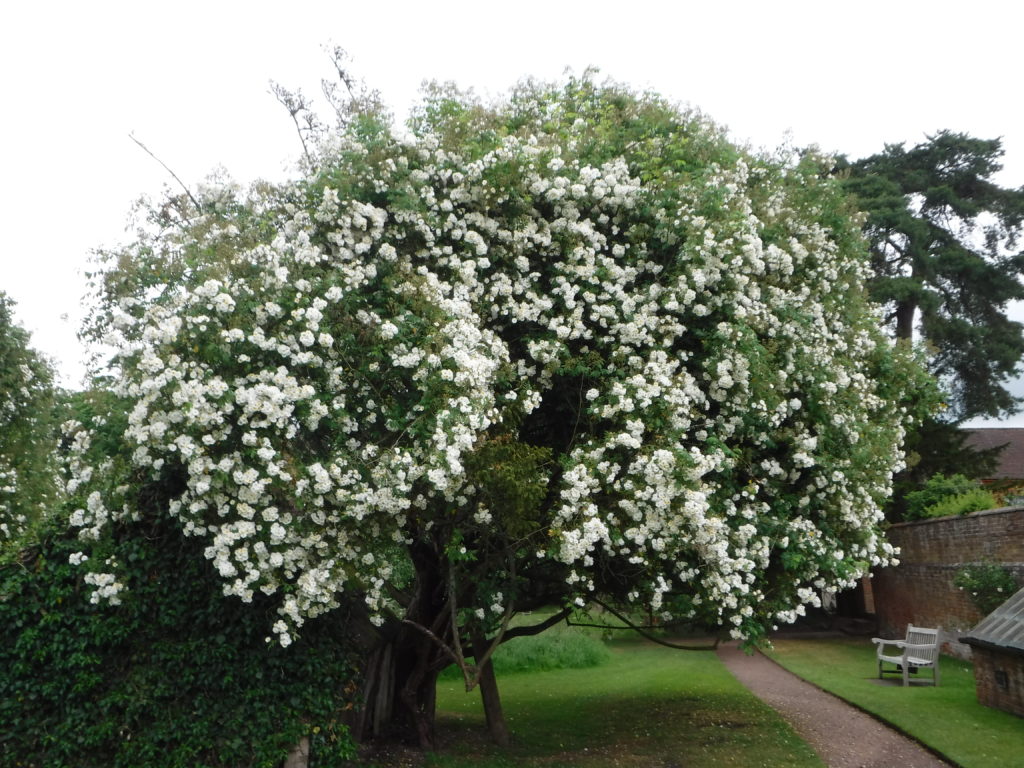
It must be thirty feet tall. I think it’s some early variety of rose, not far removed from the original dog rose with five petals that all modern roses were bred from, though it has a few more petals than that. The hawthorn blossom has gone now, fluttering down like a light snowstorm, but the dog roses are in bloom along the canal.
There’s a handsome scarecrow standing guard over the vegetable garden.
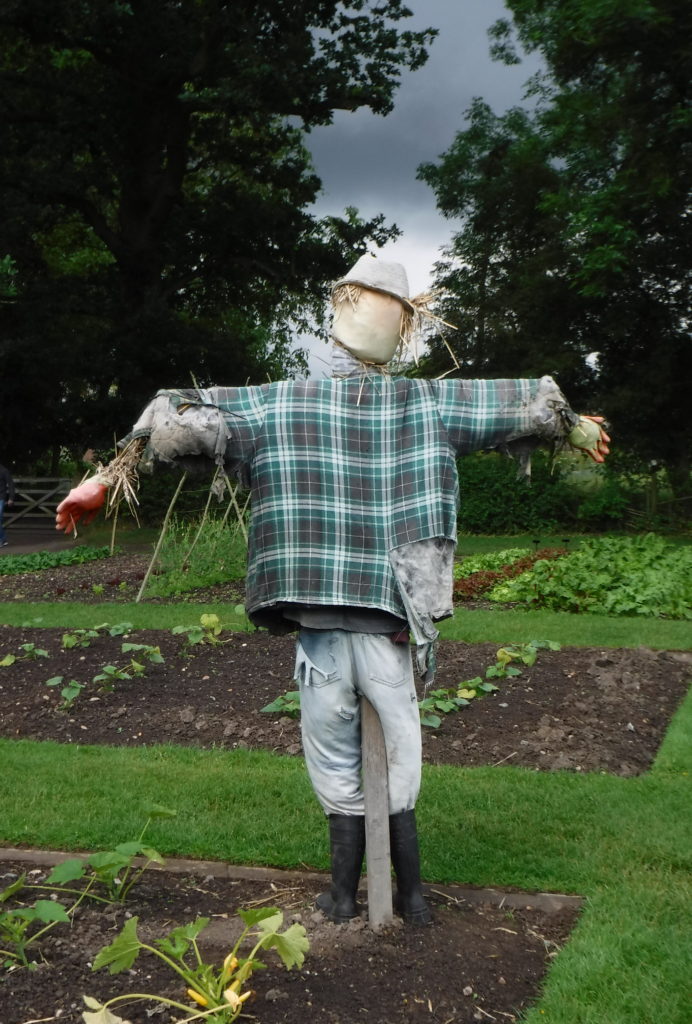
Back to the bloodstains: here they are.
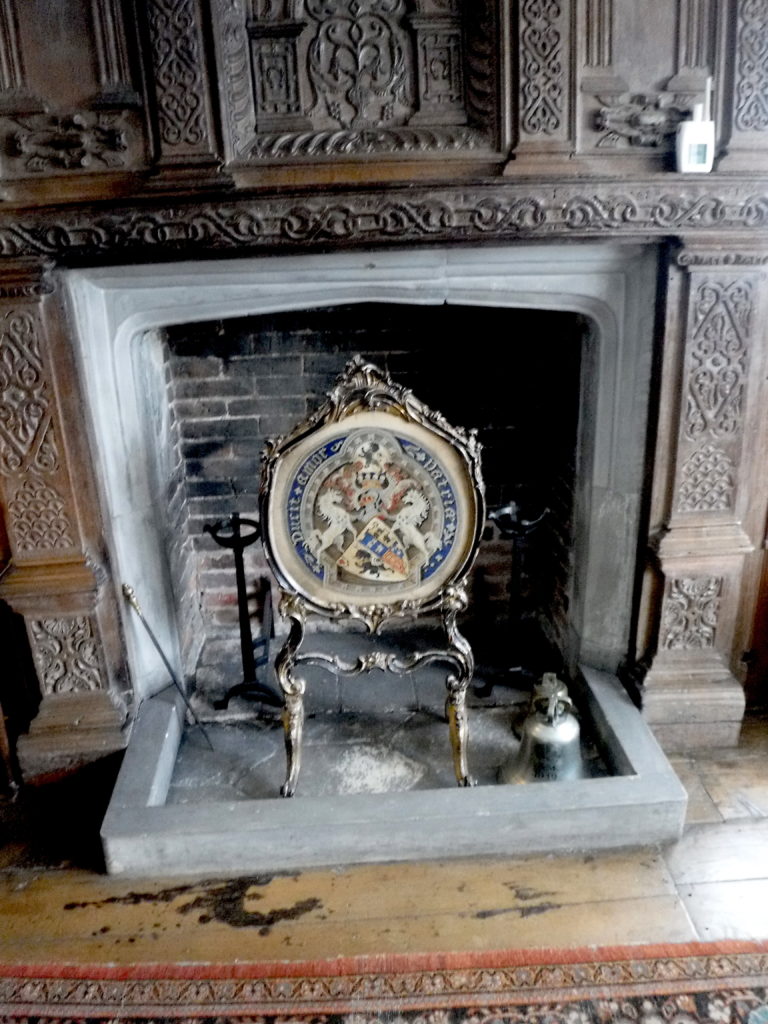
The story goes that in 1485 the lord of the manor, Nicholas Brome walked in on a priest flirting with his wife, and promptly killed him leaving bloodstains on the floor. Brome was rich enough to buy his way out of this act of murder by building a new tower for the local church, but as part of his penance he was buried standing up in the church entrance, so churchgoers have been walking over his head for the past five hundred years. However, this part of the building was not constructed until 1536 and DNA testing showed that the stains are pigs blood, so either the Ferrers were in the habit of slaughtering pigs in the library, or someone poured pigs blood on the library floor to wow the chicks.
One thought on “The Bloodstains in the Library”
goose for turkey dinner. organic goose.